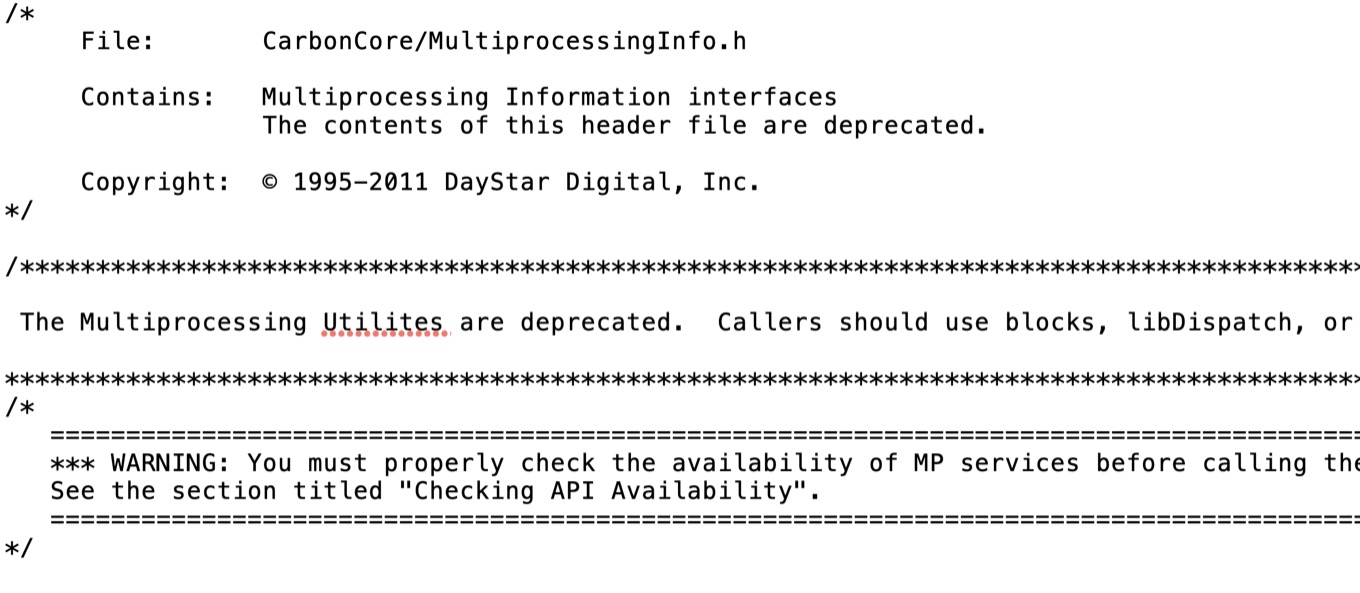By Jason Snell
September 7, 2020 9:00 AM PT
Last updated December 28, 2020
20 Macs For 2020: #15 – DayStar Genesis MP
Note: This story has not been updated since 2020.

Today, the chips that drive all of Apple’s products have multiple processing cores, able to do work in parallel. The iPhone 11 has six. My iMac Pro has eight.
But there was a time when the only Mac that supported multiprocessing wasn’t a Mac at all, but an extremely expensive workstation from a small town in northeastern Georgia. Don’t call it a clone. It was much, much more than that.

We refer to the era of Apple’s ill-fated attempt at licensing Mac OS to outside hardware companies as “the Mac clone era,” but that word—clone—can give a mistaken impression. If you didn’t live through the mid-90s as a Mac user, you might assume that it was an era in which Apple farmed out its hardware design to a bunch of boring PC cloners who undercut Apple’s Mac prices with a series of underwhelming, mediocre knockoffs.
But that’s not quite right, because there was a lot of innovation in the Mac clone world. Power Computing was probably the most well-known Mac clone maker, but the biggest single innovation from all the Mac cloners came from a place that isn’t well known: Flowery Branch, Georgia, a small town northeast of Atlanta that now serves as the summer training-camp home of the Atlanta Falcons.
Flowery Branch was the home of DayStar Digital, a company that made upgrades for Macs that were focused on wringing the fastest speeds out of the available hardware. As a result, the company gained a following with people who desperately needed as much power as they could get—pros in the graphics and video industries.
When Apple announced that it was going to be licensing Mac OS to other PC makers, DayStar essentially bet its business on converting from being a manufacturer of high-end upgrades for Apple-built Macs to being a manufacturer of high-end Mac clones. DayStar’s clone was the Genesis MP, and the MP stood for multiprocessing. It was the very first Mac to combine the work of multiple processors toward a common goal.
The problem: Classic Mac OS wasn’t built for multiple processor cores. The operating system knew about its processor, and it used it, and that was it. But the engineers at DayStar had been working on something novel for its high-end audience.

The Power Macs in this period stored their processor on a removable daughtercard, which allowed companies like DayStar to sell upgrades that let the user replace a slower processor with a faster one without replacing their entire system. And DayStar began engineering a daughtercard with not one, but two PowerPC chips on it. The PowerPC architecture was designed with multiprocessor support in mind, even if Mac OS didn’t support it and even if there were limitations in the initial PowerPC chip designs that made multiprocessing support a much tougher nut to crack. DayStar engineer David Sowell built a multiprocessing kernel that let the Mac address the second processor directly, and DayStar branded the whole thing as “nPower.”
Then two key events occurred: Apple announced that it would be licensing Mac OS to clone makers, and IBM and Motorola announced the PowerPC 604 chip, which fully supported multiprocessing. That was the moment that DayStar bet the farm on the Genesis MP and the DayStar MP Library system extension, which let individual apps farm out tasks to the second processor while the bulk of Mac OS ran on the first one.
Unsurprisingly, Photoshop was the first app to support Mac multiprocessing, via an MP extension for Photoshop 3.0.4. And it worked: the Genesis MP was 2.5 times as fast as a Power Mac 9500/132, according to MacUser magazine’s tests.
All this power and innovation came, by design, at a steep price. The Genesis MP started at $10,000 and the price went up from there. You can see why DayStar felt it was the perfect clone maker for the moment: Everything about DayStar’s stuff was pushing hardware to the limits for the benefit of the high-end market. DayStar’s customers wanted the fastest graphics cards, the most RAM, and why only use one processor when you could have two? Or four?

The DayStar MP Library was so successful that Apple integrated it into Mac OS itself in 1996. Apple wanted to make multiprocessor systems of its own, and DayStar had already done the work. The first multiprocessor Mac was the Power Mac 9500/180 MP. Former Daystar CEO Andrew Lewis told me that the dual-processor daughtercard for that Mac model was actually designed for Apple by DayStar Digital. (And Apple didn’t bother with a four-processor model at all, and left that market to DayStar.)
Unfortunately, while the DayStar MP Library contributed a key feature to Mac OS, DayStar Digital’s play to become the clone maker for the high-end Mac market didn’t pay off. Steve Jobs returned to power at Apple, DayStar Digital had focused its entire business on the DayStar MP, and when Jobs killed the clone-licensing program the end was inevitable. DayStar sold off its remaining supply of Genesis MPs and largely shut down.
And yet DayStar’s legacy lives on. When I was researching the story, I was searching for references to DayStar Digital and a few strange header files from old installations of Xcode and OS X cropped up. And there it was, plain as day:

Fourteen years after this all went down, long after the company itself had faded away, DayStar Digital was still in there. Its contribution forgotten, perhaps—but not gone.
I’ll be back next week with number 14.
If you appreciate articles like this one, support us by becoming a Six Colors subscriber. Subscribers get access to an exclusive podcast, members-only stories, and a special community.

